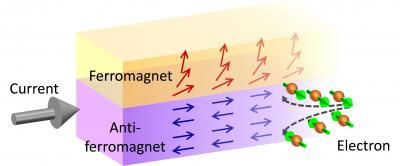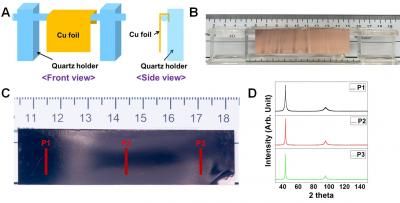Discovery could lead to jet engines that run hotter - and cleaner
Advertisement
Researchers here have made a discovery in materials science that sounds like something from the old Saturday morning cartoon Super Friends: They've found a way to deactivate "nano twins" to improve the high-temperature properties of superalloys that are used in jet engines.
The advance could speed the development of powerful and environmentally friendly turbine engines of all sorts, including those used for transportation and power generation.
The "nano twins" in question are microscopic defects that grow inside alloys and weaken them, allowing them to deform under heat and pressure. Engineers at The Ohio State University describe how tailoring an alloy's composition and then exposing it to high heat and pressure can not only prevent nano twins from forming, it can actually make the alloy stronger.
In tests, the technique, which they've dubbed "phase transformation strengthening," eliminated the formation of nano twins and decreased alloy deformation by half.
Strong, heat-resistant alloys enable turbine engines to run cleanly and efficiently, explained Michael Mills, professor of materials science and engineering and leader of the project at Ohio State. When an engine can run at very high temperatures, it consumes its fuel more thoroughly and produces lower emissions.
"We found that increasing the concentrations of certain elements in super-alloys inhibits the formation of high-temperature deformation twins, thereby significantly improving the alloys' high temperature capabilities," Mills said.
These days, the most advanced alloys are designed on computer--practically atom by atom--and Mills' team set out to address what he called a deficit in the "quantitative, comprehensive understanding" of how these exotic metal-based materials deform under high stress.
The researchers made the discovery when they were studying nano twin formation in two different commercial superalloys. They compressed samples of the alloys with thousands of pounds of pressure at around 1,400 degrees Fahrenheit--a temperature comparable to a running jet engine--and afterward examined the alloys' crystal structures with electron microscopes and modeled the quantum mechanical behavior of the atoms on a computer.
In both alloys, the temperature and pressure caused nano twin faults to develop within the superalloy crystals. And, in both alloys, the material composition in and around the faults changed, but in different ways.
Through a sequence of atomic-scale jumps, some elments--such as atoms of nickel and aluminum--diffused away from the faults, while others diffused into the faults. The researchers were able to detect these fine-scale movements using the advanced electron microscopes at the Ohio State's Center for Electron Microscopy and Analysis (CEMAS), which offers one of the largest concentrations of electron and ion beam analytical microscopy instruments in any North American institution.
"In the first alloy, which was not as strong at high temperature, atoms of cobalt and chromium filled the fault," said Timothy Smith, former student at Ohio State and lead author of the study. "That weakened the area around the fault and allowed it to thicken and become a nano twin."
But in the second alloy--the one that didn't form nano twins--the elements titanium, tantalum and niobium tended to diffuse into the faults instead. As a result, a new and very stable phase of material formed right at the faults. The new phase was so stable that it resisted the formation of nano twins.
The tendency for particular atoms to diffuse into the nano twin faults depends on the overall composition of the alloy, the researchers found. "We discovered that when the amount of titanium, tantalum, and niobium in the alloy was increased, while decreasing cobalt and chromium, we could actually strengthen the region around the faults and prevent the fault from widening into a nano twin," Smith said.
The researchers' innovative combination of atomic-level imaging and high-end computing is a unique feature of research done at CEMAS, said David McComb, study co-author and director of CEMAS.
"Research such as this perfectly illustrates the power of CEMAS to help drive discovery in new materials and processes," he added.
The team is continuing to study phase transformation strengthening, to see if tailoring the alloy compositions in different ways might enhance the effect.


































































